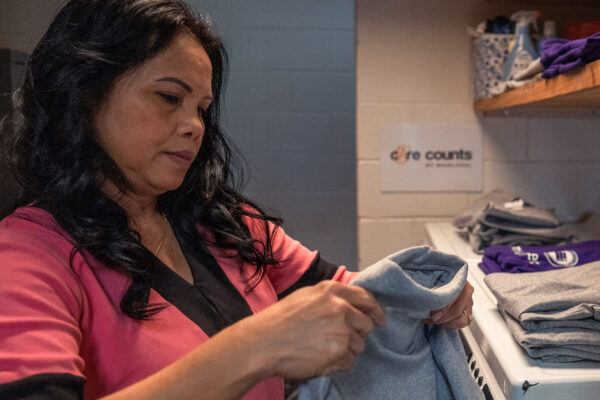Much attention in the post-pandemic era has been on what students have lost – days of school, psychological health, knowledge and skills. But now we have evidence that they may also have gained something: schools that address more of their needs. A majority of public schools have begun providing services that are far afield from traditional academics, including healthcare, housing assistance, childcare and food aid.
In a Department of Education survey released in October 2023 of more than 1,300 public schools, 60 percent said they were partnering with community organizations to provide non-educational services. That’s up from 45 percent a year earlier in 2022, the first time the department surveyed schools about their involvement in these services. They include access to medical, dental, and mental health providers as well as social workers. Adult education is also often part of the package; the extras are not just for kids.
“It is a shift,” said Marguerite Roza, director of the Edunomics Lab at Georgetown University, where she tracks school spending. “We’ve seen partnering with the YMCA and with health groups for medical services and psychological evaluations.”
Deeper involvement in the community started as an emergency response to the coronavirus pandemic. As schools shuttered their classrooms, many became hubs where families obtained food or internet access. Months later, many schools opened their doors to become vaccine centers.
New community alliances were further fueled by more than $200 billion in federal pandemic recovery funds that have flowed to schools. “Schools have a lot of money now and they’re trying to spend it down,” said Roza. Federal regulations encourage schools to spend recovery funds on nonprofit community services, and unspent funds will eventually be forfeited.
The term “community school” generally refers to schools that provide a cluster of wraparound services under one roof. The hope is that students living in poverty will learn more if their basic needs are met. Schools that provide only one or two services are likely among the 60 percent of schools that said they were using a community school or wraparound services model, but they aren’t necessarily full-fledged community schools, Department of Education officials said.
The wording of the question on the federal School Pulse Panel survey administered in August 2023 allowed for a broad interpretation of what it means to be a community school. The question posed to a sample of schools across all 50 states was this: “Does your school use a “community school” or “wraparound services” model? A community school or wraparound services model is when a school partners with other government agencies and/or local nonprofits to support and engage with the local community (e.g., providing mental and physical health care, nutrition, housing assistance, etc.).”
The most common service provided was mental health (66 percent of schools) followed by food assistance (55 percent). Less common were medical clinics and adult education, but many more schools said they were providing these services than in the past.
Jill Barshay is a senior reporter at The Hechinger Report, where she writes the weekly “Proof Points” column about education research and data. This column was initially published by The Hechinger Report.

